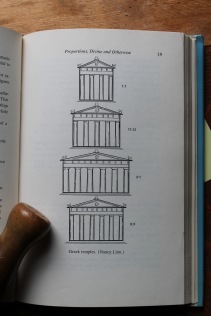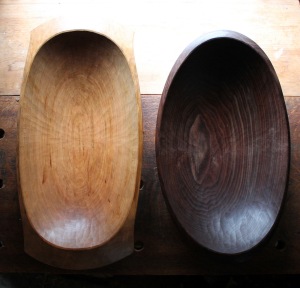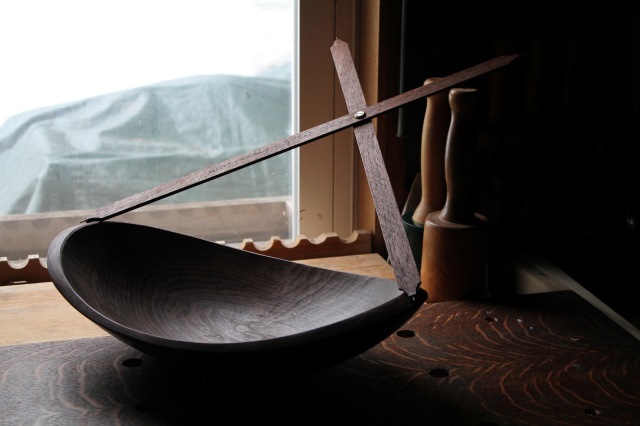The question of measuring beauty — that is objective assessment beyond “Very nice,” “Exquisite,” “This appeals to me” — has troubled scholars and other laymen at least from the time of the Greeks. And, beginning with the Greek philosophers, there has been widespread disagreement.
— The Golden Mean: Mathematics and the Fine Arts by Charles F. Linn (1974)
The golden mean, the divine proportion, the golden rectangle; whatever one calls it, the argument goes that the ancients discovered a ratio that was a key to beauty. Simply put, it describes the ratio between two components (e.g. width and length) so that the shorter is to the longer as the longer is to the sum of the two (S:L=L:S+L). This works out to a ratio of 1:1.618. Of course, they had to get over the fact that it is not a whole number. Neither is pi, but irrational as it is, it comes in pretty handy.
Today it is still used to varying degrees by architects, designers, even plastic surgeons. Heck, even Donald Duck knows about it:
 If you’d like to dig way deeper into the golden mean, the Fibonacci sequence, mathematics in music, patterns, and more, pick up a copy of Mr. Linn’s little book (quoted to open this post). He shows a great sense of humor and makes a potentially dry subject pretty interesting. To the left is a page that he uses in an experiment, asking people which building proportion they prefer.
If you’d like to dig way deeper into the golden mean, the Fibonacci sequence, mathematics in music, patterns, and more, pick up a copy of Mr. Linn’s little book (quoted to open this post). He shows a great sense of humor and makes a potentially dry subject pretty interesting. To the left is a page that he uses in an experiment, asking people which building proportion they prefer.
Linn says the majority pick the bottom one, 5:3 (or 1.6:1), the closest of the four to the golden proportion. Still, he is skeptical of folks that want to, in hindsight, find the divine proportion lurking in everything the ancients built. In fact, he presents a rebuttal of such an argument regarding the pyramids.
So how does all of this apply to bowls, and what is that thing with the bowl in the opening photo? The walnut bowl in that photo is one I just made, an ellipse with a length and width purposely laid out according to the golden proportion — the first time I’ve consciously done so with a bowl. I got so caught up in the idea that I even made a simple proportional divider — two sticks of equal length with a pivot point connecting them. In this case, the pivot point is positioned at a point that divides the length into a 1:1.618 ratio. Whatever width they are opened to, the golden proportion exists between the wider end and the narrower end. The same can be done for any ratio by placing the pivot point at the appropriate spot.
So…the bowl is nice. However, to be honest, it doesn’t seem to me to have a magical attraction. It is not glowing with a golden radiance. Besides, the only way to view it from a perspective that reveals this special proportion is to position one’s head directly over the center of the bowl. How often are we viewing any building or cabinet from the perspective that indicates it’s perfect proportions? Or maybe things with good proportions look good from any vantage point. And, with a bowl, do the handles count?
 In this photo, the walnut bowl is on the right (not yet complete) and a nearly finished cherry bowl is on the left. The outside of the walnut bowl is done to the golden proportion, while the outer dimensions of the cherry bowl are in a 2:1 ratio (which occurred by accident). However, that includes the handles while the hollow form seems to grab the eye’s attention more. And the hollows are different shapes, colors, etc.
In this photo, the walnut bowl is on the right (not yet complete) and a nearly finished cherry bowl is on the left. The outside of the walnut bowl is done to the golden proportion, while the outer dimensions of the cherry bowl are in a 2:1 ratio (which occurred by accident). However, that includes the handles while the hollow form seems to grab the eye’s attention more. And the hollows are different shapes, colors, etc.
Proportion is just one element in the design of any piece — bowl, furniture, figure, or other. With bowls, the lines of a piece are as important, probably more. I have made bowls of all sorts of proportions from round (1:1) to another 40 inches long and 10 inches wide (4:1) and all sorts of proportions in between. I just laid out a bowl on a walnut log over the weekend. It will be 22 inches long and 17 inches wide. Why? Width: because it grew that wide and I won’t waste any of that wide dark heartwood. Length: because there were branches above and below, plus any longer and I might not have been able to carry it! It is up to me to come up with a good design within those dimensions. In that way, designing greenwood bowls is different from designing furniture.
I think the golden proportion, or any proportion, can be a useful guide. I realized after making many bowls, that the size of the bottoms I laid out by eye tended to be at a 1:3 ratio to the size of the top hollow. So now I know I like bottoms with a certain ratio (I think there is a song about that). In some cases proportions might even be essential or at least very important — as in painting a realistic human being.
Rather than suggest that there is one ideal proportion, George Walker and Jim Tolpin focus on methods of finding pleasing proportions using simple, whole number ratios. Their book By Hand and Eye is a fascinating and enlightening look into all of this stuff and more. They explain how to put proportions to work!
So, how important is the golden proportion? How heavily was it relied on in the past? Do all pretty faces display it? I don’t know, but I find it interesting. More important, I think, is to trust intuition. Trust your eye. A knowledge of proportions can help one to recognize why he finds something beautiful, but I think, I hope, that it is unrealistic to discover a conclusive formula for beauty. And a little mystery is nice too. I’m not about to approach a wooden canoe, a songbird, or my wife with calipers. Besides, only the canoe would cooperate.


36/21/40 shape. Girl, you got me goin’ ape-iddy-ape.. Or was that 35?
LikeLike
Actually, my subconscious has just informed me that the first number should be 39. Whew!
LikeLike
I can’t see into your subconscious, Scott, but according to the Showmen, it is 39-21-46. You can here it here https://www.youtube.com/watch?v=__UeSD7tYr4 on YouTube all the way from 1962. I learn something new every day!
LikeLike
Actually, 40 is correct it seems. They have the title wrong on the YouTube video, due to a record label misprint.
LikeLike
It really is odd how this makes sense to the eye. When I built my first solo timber frame barn (it was a monitor style) The main structure to the “lean too’s” were very close to this ratio. I discovered this in hindsight. It just worked out that way. It looked good on paper and made for good workable space. Weird.
LikeLike
I think the hindsight idea is interesting. If we start consciously designing to a proportion, maybe we will convince ourselves that the result must look good — because it is supposed to.
LikeLike
Dave, on the 1:3 bottoms:hollow ratio, does that mean you have settled into an oval bottom that is 1/3 the width and 1/3 the length of the top hollow? That ratio would tend to set the slope of the sides, wouldn’t it (so that the sides would be steeper if the bottom was larger, and shallower if the bottom was smaller)?
LikeLike
Geoff,
Yes, that is what I mean essentially. The bottom is usually a smaller version of whatever shape the edge of the hollow is. It does sort of set the slope of the sides, but the height of the bowl is a determining factor in that also. Two bowl with the same size hollow and bottom, but with a two inch difference in height will have differently sloped sides. I’ve never measured the actual slope angle or anything. I just connect the upper edge and the bottom edge by sculpting, and the slope happens.
I never really “decided” on a 1:3 ratio. Rather, I just eventually noticed that that ratio is what was occurring when I just decided how big the bottom “ought” to be. I’ve always done the hollow first in a sweep sort of natural for the adze (still, the adze allows for a range of possibilities). I then want the finished walls of the bowl to be somewhat consistent in thickness from the upper rim to the bottom, which cannot happen if the bottom is too large. The walls would have to thicken significantly as they neared the bottom, making the bowl somewhat clunky possibly.
For holding salad, fruit, chips, etc. I find that the 1:3 ratio is plenty stable. I’ve never noticed any problem at all. If I were to make a bowl specifically for kneading dough or some other task that required extra stability, then I would carve the hollow more steeply at the sides, make the bottom bigger (say 1:2), and the sides would have a steeper slope — but they would still match the interior.
Having said all that, I use the ratio just as a guide. I make the final decision with my eye and by taking the individual whole design into consideration. There’s not even a hard and fast rule that the sides do have to be consistent from top to bottom.
Well, it’s easier to draw a picture. I’ll find a pencil….
LikeLike